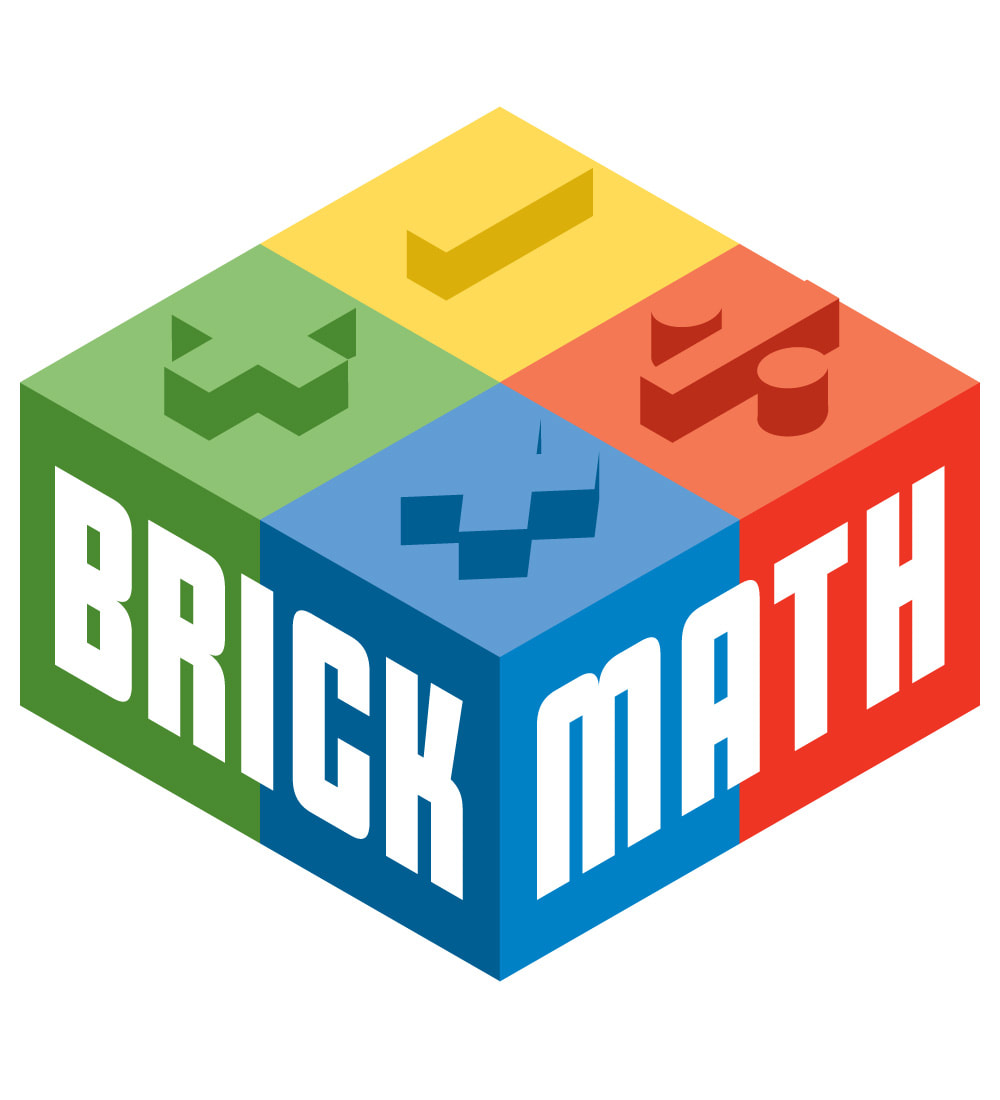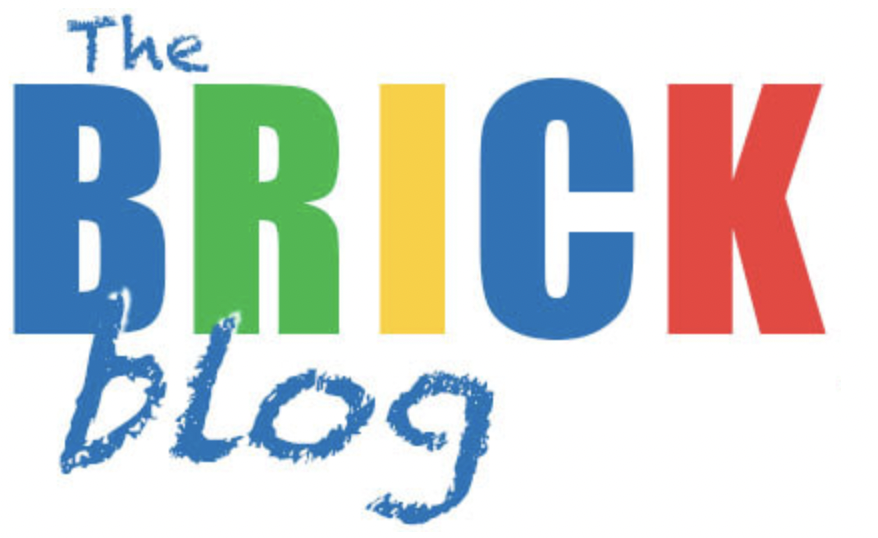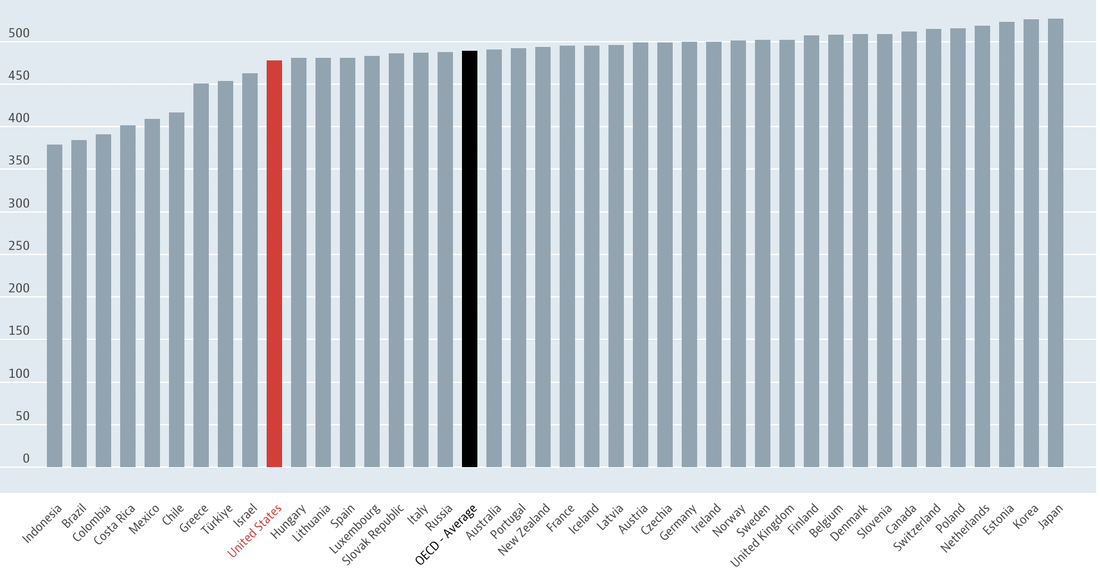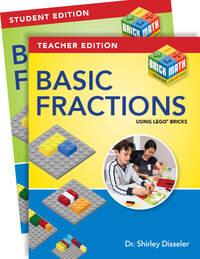 This month's free Brick Math Lesson of the Month is a game for students to play that reinforces multiplication terminology and skills. You can get the Blocks and Bricks Game, from Brick Math Multiplication, by clicking here, and you'll get a new free Brick Math lesson every month after that.  The Blocks and Bricks Game is played in pairs. Each student rolls a die twice, first to establish their multiplier and then their multiplicand. They then build blocks representing the multiplier and fill them with bricks representing the multiplicand. The directions for the game are given for the teacher to explain in the Teacher Lesson Plans and then given to the student in the Student Workbook Pages.  The Blocks and Bricks Game is a fun, non-competitive way for students to practice simple multiplication facts and their knowledge of multiplication vocabulary. It's a great summer activity to keep students enjoying math! Brick Math is a complete math curriculum for kindergarten through 8th grade that models the math with bricks. The curriculum is divided into 13 separate content areas: Counting, Addition, Subtraction, Multiplication, Division, Basic Fractions, Basic Measurement, Fraction Multiplication, Fraction Division, Advanced Measurement and Geometry, Decimals, Data and Statistics, and Pre-Algebra. Students can start anywhere in the curriculum. It can be used as a complete math curriculum or brought in as a supplement to help students who aren't having math success with other programs.  Brick Math works in many applications: for homeschooling, math intervention, enrichment, and as a whole-school program. Materials are simple and affordable. If you are a math teacher or a parent with a student at home who is learning K-8th grade math, check brickmath.com. The website includes videos for both teacher training and direct instruction of students. You can learn more about how Brick Math improves students' math test scores and hear what people who are using Brick Math have to say about the program.
0 Comments
 We have something a little different for the free Brick Math Lesson of the Month this time: a multi-day curriculum you can implement as a summer program or refresher course! "Building Skills with Brick Math" is the perfect way to help students strengthen their math skills within a limited time period. This one is for Basic Fractions, and there are programs for ten more math subjects that you can use with your students. To get your free Building Skills with Brick Math program for Basic Fractions, plus a new lesson each month, click here. If you'd like to see more Building Skills Summer Programs for other subjects, click here.  This curriculum is designed to be taught over 12 days. It includes a variety of learning techniques including manipulatives, drawing, verbal explanation, physical movement, and song. Students work with a partner, use the vocabulary fluently in math conversations, and assess themselves on their abilities. The teacher uses the lessons in the Teacher Edition, and the students follow along in their own Student Editions. At the end of the 12-day session, students will have sharpened their skills in Basic Fractions by following this innovative program.  Brick Math is a complete math curriculum for kindergarten through 8th grade that models the math with bricks. The curriculum is divided into 13 separate content areas: Counting, Addition, Subtraction, Multiplication, Division, Basic Fractions, Basic Measurement, Fraction Multiplication, Fraction Division, Advanced Measurement and Geometry, Decimals, Data and Statistics, and Pre-Algebra. Students can start anywhere in the curriculum. It can be used as a complete math curriculum or brought in as a supplement to help students who aren't having math success with other programs. Brick Math works in many applications: for homeschooling, math intervention, enrichment, and as a whole-school program. Materials are simple and affordable. For an innovative way to teach and learn K-8th grade math, check brickmath.com. The website includes videos for both teacher training and direct instruction of students. You can learn more about how Brick Math improves students' math test scores and hear what people who are using Brick Math have to say about the program.  The free Brick Math Lesson of the Month for May is from Brick Math Addition, and it's the first time in the series that the concept of place value is introduced. To get your free lesson on Place Value Addition, plus a new lesson each month, click here.  Place value is an important idea for students to learn early on. Modeling with bricks makes it easy. Here's the idea: 1x1 bricks model the ones place, 1x2 bricks model the tens place, and 1x3 bricks model the hundreds place. That's as far as we go in this lesson, but soon we will extend the place value modeling idea to thousands, ten-thousands, hundred-thousands, and more!  This lesson shows students how to model place value with bricks, and then it uses those models to show addition within the place values. Students start by modeling the numbers 25 and 123 with bricks. Once they understand the concept, they move to adding two numbers. When students model the math with bricks to show place value, the math becomes clear and concrete. This lesson first shows the pages from the Addition Teacher Edition, with the step-by-step lesson guide for the teacher to follow. Then the rest of the lesson are the corresponding pages from the Student Edition, which have written instructions and give students a place to draw the models they are building. Try this lesson to introduce your students to the concept of place value. The hands-on nature of building with bricks will help them understand the meaning of place value quickly. Brick Math is a complete math curriculum for kindergarten through 8th grade that models the math with bricks. The curriculum is divided into 13 separate content areas: Counting, Addition, Subtraction, Multiplication, Division, Basic Fractions, Basic Measurement, Fraction Multiplication, Fraction Division, Advanced Measurement and Geometry, Decimals, Data and Statistics, and Pre-Algebra. Students can start anywhere in the curriculum. It can be used as a complete math curriculum or brought in as a supplement to help students who aren't having math success with other programs.  Brick Math works in many applications: for homeschooling, math intervention, enrichment, and as a whole-school program. Materials are simple and affordable. For an innovative way to teach and learn K-8th grade math, check brickmath.com. The website includes videos for both teacher training and direct instruction of students. You can learn more about how Brick Math improves students' math test scores and hear what people who are using Brick Math have to say about the program.  Journalist Jessica Grose has two recent op-eds in the New York Times that question the use of computers for children’s learning in subjects including mathematics. Students are using their school-issued Chromebooks and iPads to watch YouTube videos and play video games instead of following the teacher’s lesson. When kindergarteners learn to read only on iPads, not physical books, their comprehension suffers. Studies about technology-based education show that giving kids computers develops their computer proficiency, but not much else. Screens can help as practice tools, but they aren’t the best method for learning the basics of math and reading. 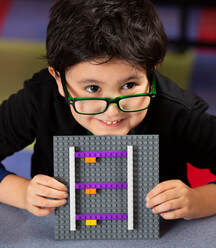 Our solution: Brick Math. The curriculum was developed as a screen-free method of learning. With Brick Math, students build models of math problems with plastic building bricks in thirteen K - 8th grade math content areas that range from Counting to Pre-Algebra. The students draw a model with bricks and explain with words why the model shows the math. The brick model makes the math tactile and concrete. For many students, the physical process of building with bricks is the key to learning when a traditional curriculum hasn’t worked for them. 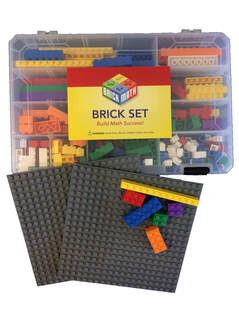 Computers and screens may have their place in the classroom as “supports on the margins,” but their use seems limited. A screen-free program like Brick Math engages students fully and promotes true learning. Brick Math is a complete math curriculum for kindergarten through 8th grade that models the math with bricks. The curriculum is divided into 13 separate content areas: Counting, Addition, Subtraction, Multiplication, Division, Basic Fractions, Basic Measurement, Fraction Multiplication, Fraction Division, Advanced Measurement and Geometry, Decimals, Data and Statistics, and Pre-Algebra. Students can start anywhere in the curriculum. It can be used as a complete math curriculum or brought in as a supplement to help students who aren't having math success with other programs. 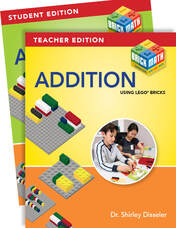 Brick Math works in many applications: for homeschooling, math intervention, enrichment, and as a whole-school program. Materials are simple and affordable. For an innovative way to teach and learn K - 8th grade math, check brickmath.com. The website includes videos for both teacher training and direct instruction of students. You can learn more about how Brick Math improves students' math test scores and hear what people who are using Brick Math have to say about the program. 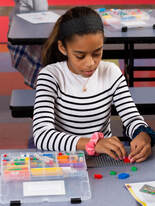 Happy Spring! No April Fooling from us today -- it's time for a new FREE Brick Math Lesson of the Month! This lesson comes from Data and Statistics, which is part of the extension of the Brick Math curriculum into 7th-8th grade math subjects. It shows how to use bricks to model bar graphs and histograms, and maybe most importantly, to understand when to use the different types of graphs depending on the type of data. To get the April 2024 Brick Math Lesson of the Month, "Bar Graphs and Histograms" plus a new lesson each month, click here. Each Lesson of the Month includes the Teacher Lesson Guide as well as the Student Workbook Pages that correspond to the lesson. 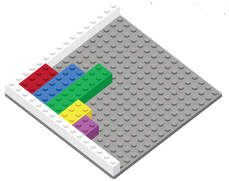 This lesson really uses the bricks well to help students learn how to construct bar graphs and histograms when given a set of data. It reinforces a key piece of information about building graphs: that bar graphs are uses for discrete data and histograms are used for continuous data. Building graphs out of bricks and then drawing those graphs is part of the learning process that gives students confidence in their ability to represent data in graphical form. 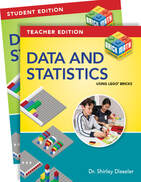 Data and Statistics and Pre-Algebra bring the Brick Math curriculum into 7th and 8th grade math. The topics are perfect for middle school students who are learning the topics for the first time, or for students who need some help learning because a more traditional curriculum has failed them. Brick Math is a complete math curriculum for kindergarten through 8th grade that models the math with bricks. The curriculum is divided into 13 separate content areas: Counting, Addition, Subtraction, Multiplication, Division, Basic Fractions, Basic Measurement, Fraction Multiplication, Fraction Division, Advanced Measurement and Geometry, Decimals, Data and Statistics, and Pre-Algebra. Students can start anywhere in the curriculum. It can be used as a complete math curriculum or brought in as a supplement to help students who aren't having math success with other programs. Brick Math works in many applications: for homeschooling, math intervention, enrichment, and as a whole-school program. Materials are simple and affordable.
For an innovative way to teach and learn K-8th grade math, check brickmath.com. The website includes videos for both teacher training and direct instruction of students. You can learn more about how Brick Math improves students' math test scores and hear what people who are using Brick Math have to say about the program. 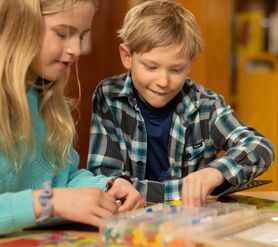 The FREE Brick Math Lesson of the Month for March 2024 comes from Pre-Algebra. It uses bricks to model an ingenious way to teach students how to solve two-step equations and inequalities. To get the March 2024 Brick Math Lesson of the Month, "Solving Two-Step Equations and Inequalities" plus a new lesson each month, click here. Each Lesson of the Month includes the Teacher Lesson Guide as well as the Student Workbook Pages that correspond to the lesson. 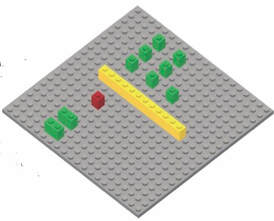 What's ingenious about the Brick Math method is the way specific bricks model specific parts of the equation. In the example shown, the green 1x2 bricks model two positive x terms. The red 1x1 brick models negative 1, and the green 1x1 bricks each model positive 1. The long yellow brick down the center models the equal sign. In this way, the model shows 2x - 1 = 7. Then the lesson shows how to manipulate the bricks to solve the equation. The lesson includes a chart of all the values each brick represents. 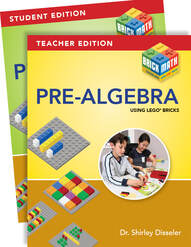 Pre-Algebra sets the stage for all the high school math in the future, and many students learn the rote algorithms but never understand what they mean. Brick Math helps students develop a true understanding of math by approaching it in a concrete way. Brick Math is a complete math curriculum for kindergarten through 8th grade that models the math with bricks. The curriculum is divided into 13 separate content areas: Counting, Addition, Subtraction, Multiplication, Division, Basic Fractions, Basic Measurement, Fraction Multiplication, Fraction Division, Advanced Measurement and Geometry, Decimals, Data and Statistics, and Pre-Algebra. Students can start anywhere in the curriculum. It can be used as a complete math curriculum or brought in as a supplement to help students who aren't having math success with other programs. Brick Math works in many applications: for homeschooling, math intervention, enrichment, and as a whole-school program. Materials are simple and affordable. If you are a math teacher or a parent with a student at home who is learning K-8th grade math, check brickmath.com. The website includes videos for both teacher training and direct instruction of students. You can learn more about how Brick Math improves students' math test scores and hear what people who are using Brick Math have to say about the program. Math scores in US are still lower than most other industrialized countries, according to the results of the PISA exam, given to students around the world. While reading scores have improved a bit, math still lags far behind in this test of 15-year-olds. In fact, in math, the US ranks 28th out of 37 participating countries. Why the discrepancy between the US and other countries? According to the New York Times, other countries consider math to be a learned skill, but in the US, math is seen more as a talent. This type of thinking can be very detrimental to students who may be pigeonholed early as not being a “math kid.” 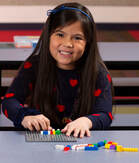 At Brick Math, we firmly believe that every student can learn math. According to author Dr. Shirley Disseler, “There is no such thing as a student who is bad in math. They just need to be taught with methods that work.” 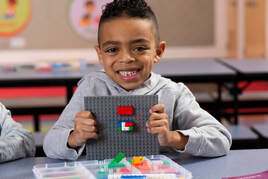 Brick Math uses LEGO® bricks to model math in 13 subjects from kindergarten through eighth grade. Students learn the “why” behind the math, which is key to building their math skills over time. The Brick Math program is perfect for visual and tactile learners. It makes math, which is an abstract concept, into concrete representations that students can see and feel. Brick Math is a modular program that can be brought in wherever students are falling behind in any of the 13 subjects in the K-8 math curriculum. 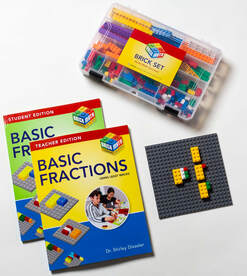 Brick Math is a K-8 math curriculum that uses LEGO® bricks to model 13 different math subjects: Counting, Addition, Subtraction, Multiplication, Division, Basic Fractions, Basic Measurement, Fraction Multiplication, Fraction Division, Advanced Measurement and Geometry, Decimals, Data and Statistics, and Pre-Algebra. Brick Math works in many applications: for homeschooling, math intervention, enrichment, and as a whole-school program. Materials are simple and affordable. If you are a math teacher or a parent with a student at home who is learning K-8th grade math, check brickmath.com. The website includes videos for both teacher training and direct instruction of students. You can learn more about how Brick Math improves students' math test scores and hear what people who are using Brick Math have to say about the program. 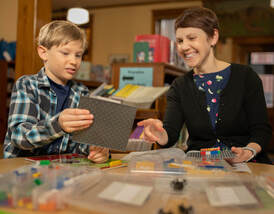 The FREE Brick Math Lesson of the Month for December 2023 is all about a tricky subject: Fraction Division. It comes from Fraction Division Using LEGO® Bricks and helps students understand a math subject area typically taught in grades 4-6. To get the December 2023 Brick Math Lesson of the Month, "Understanding Fraction Division," plus a new lesson each month, click here. Each Lesson of the Month includes the Teacher Lesson Guide as well as the Student Workbook Pages that correspond to the lesson. 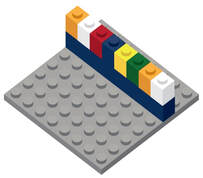 The Lesson of the Month comes from Chapter 1 of Fraction Division. It's a great way to demonstrate the meaning of dividing fractions. Often students don't understand what dividing by a fraction really is, even if they can handle the mathematical algorithm of multiplying by the reciprocal. This lesson clearly shows the concept and relates it to division by whole numbers. 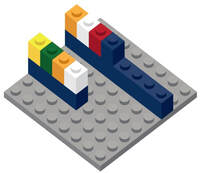 The lesson starts with a review of division by whole numbers, reminding students that "16 divided by 8" means breaking 16 into 8 groups , with 2 in each group. Then the lesson moves to an example with fractions, using the same terminology so students easily make the connection. The brick models help to demonstrate the concept. And this lesson includes two fraction division problems to help your students solidify the learning. Brick Math is a K-8 math curriculum that uses LEGO® bricks to model 13 different math subjects: Counting, Addition, Subtraction, Multiplication, Division, Basic Fractions, Basic Measurement, Fraction Multiplication, Fraction Division, Advanced Measurement and Geometry, Decimals, Data and Statistics, and Pre-Algebra. 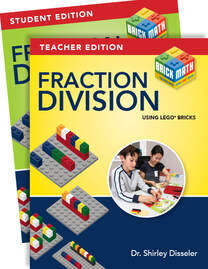 Brick Math works in many applications: for homeschooling, math intervention, enrichment, and as a whole-school program. Materials are simple and affordable. If you are a math teacher or a parent with a student at home who is learning K-8th grade math, check brickmath.com. The website includes videos for both teacher training and direct instruction of students. You can learn more about how Brick Math improves students' math test scores and hear what people who are using Brick Math have to say about the program. 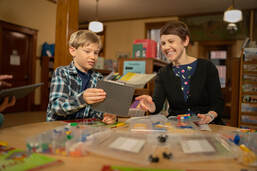 We think teachers are among the most generous people on earth. Not only do teachers give of their time and talents during the school day, they volunteer as coaches and club leaders after school and on weekends, just because they love kids and want to help. Most teachers we know also dip into their own pockets to buy items for their classrooms; in fact, research shows that teachers spend about $500 a year of their own money on supplies and curriculum that they know their students need and their school won’t buy. 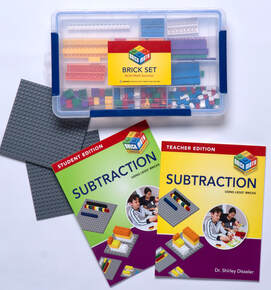 There’s a better way to find that extra money for your students: apply for a grant. There are many opportunities for funding curriculum. One of the most common questions we receive from teachers is, “How can I find the funds to purchase Brick Math for my classroom?” If you want to bring Brick Math to your classroom or school, we suggest several possible sources of funding that other teachers have used: • Title 1 Grants: These grants are available from the federal government based on school populations of low income students. We have seen a big uptick in schools ordering the Brick Math curriculum using Title 1 funds. Many schools tell us they plan to use Brick Math for intervention, to help struggling students learn basic K-8 math. Since Title 1 funds are intended to be supplementary to state and local funding, schools often use them to purchase additional curriculum to help students when more traditional methods haven’t worked. Brick Math is perfect for that purpose. • Teacher discretionary funds: In many schools, teachers receive a stipend to pay for classroom amenities and/or curriculum. Many teachers have purchased Brick Math with their discretionary funds to test the program in their own classrooms. • PTA funding – Often, Parent-Teacher groups offer money to fund new programs that teachers want their students to try. Check with your school’s PTA or PTO to see if they can help purchase Brick Math for your classroom or school. • Third-party grant programs: Generous non-profit foundations offer grants to fund curriculum like Brick Math. Many focus on STEM-related curriculum materials, and their awards range from a few hundred dollars to $50,000 or more. Look at smaller individual grants if you’re trying to fund Brick Math for your classroom, and check out larger grant programs if your school wants to bring in Brick Math on a larger scale.  Thousands of schools around the world utilize Brick Math to help students “see” the math in the K-8 curriculum by modeling with LEGO®-compatible bricks. The 13 math subjects in Brick Math range from Counting to Pre-Algebra. Brick Math is a different approach to teaching math; the lessons utilize LEGO® bricks as manipulatives, and students model the math as they learn. For students whose learning style is hands-on, Brick Math is the research-based teaching solution that teachers and schools have been looking for. And what’s more fun than learning with LEGO® bricks?! The results of national testing are in. Math scores for 13-year-olds are down by 9 points since just before the start of the pandemic. For lower-performing students, declines are even larger: 12-14 points. The NAEP’s Long-Term Trend Assessment for Mathematics looked at the math performance of 13-year-olds across the US in 2020 and again in 2023. In every region of the country, and in every gender and racial group, students have declined in their math performance. According to Peggy Carr, commissioner of the National Center for Education Statistics, the pandemic accelerated the math decline, virtually wiping out the performance gains students made from the 1970s to 2020. 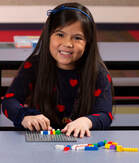 How do educators help students turn this around so kids can start building math success during the K-8th grade years? Brick Math is a solution that has been shown to increase test scores and improve students’ mathematical knowledge base. It’s a complete K-8 curriculum that teaches math by modeling math with LEGO® bricks. It’s fun to learn and easy to teach! The 13 math subjects in the Brick Math curriculum start with Counting and Cardinality for the earliest learners and go through Pre-Algebra (typically taught in late middle school). Students and teachers can start at any point in the curriculum. The materials are simple and very affordable:
In-person and online professional development is available for schools that want to fast-track the program into their curriculum. The 13 subjects in Brick Math include: Grades K - 2: Grades 3 - 4: Grades 5 - 6: Grades 7 - 8: Dr. Shirley Disseler, author of the Brick Math series, developed the concept after years of working with LEGO® Education. “I wanted to use LEGO® bricks to teach the basics of the math curriculum. It’s the perfect manipulative for teaching students the why behind the math to help them develop true mathematical understanding.” 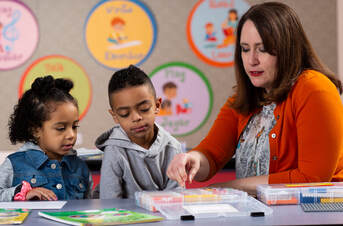 Students and teachers around the world are using Brick Math: as a whole-school curriculum, for students who are struggling to learn math, and for gifted education. The program aligns with state and national standards and is based on research from the most respected educators in the field. Homeschoolers are also using Brick Math with great success. For more information, check BrickMath.com or contact [email protected].
|
Categories
All
Archives
July 2024
|

